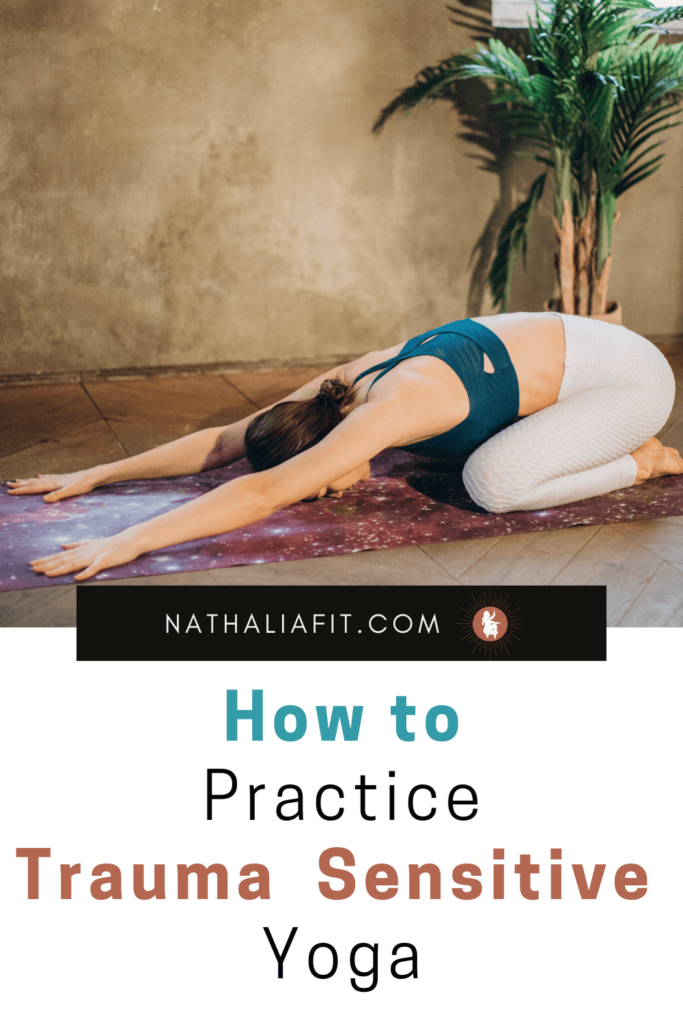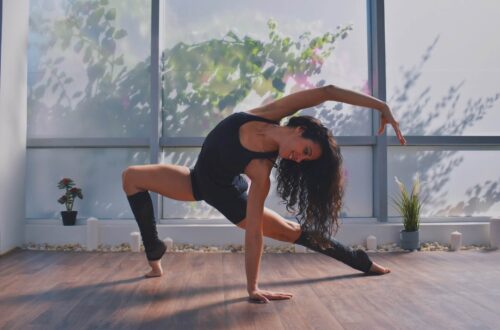
How to Practice Trauma-Sensitive Yoga
How to Practice Trauma-Sensitive Yoga
Once while worrying over an abuser I’d broken contact with, a counselor assured me that no one is safe from life’s storms (or retribution, in this case); and it felt strangely reassuring.
Now, between COVID, the election, and a rapid increase in the number of hate crimes, today’s world can be tough to face for everyone. From international incidents to personal relationships, life is filled with challenges of every magnitude.
Trauma is what happens when our bodies and minds are overwhelmed by circumstances and holds the energy of natural physical reactions (instead of processing and letting it go). Traumatic circumstances are defined by an extreme lack of choice and ultimately sever the connection to the rest of the world – alienating survivors from those who don’t share the same experiences.
Examples include a soldier who experiences an explosion, or a child born into an abusive home.
Some hallmarks of a trauma response are:
- A deep sense of shame and unworthiness (of care)
- Lack of agency
- Feels the world is not a safe place
- Believes other people are untrustworthy
These symptoms are represented in the manual for mental health professionals, the Diagnostic and Statistical Manual of Mental Disorders (DSM), most significantly in Post Traumatic Stress Disorder (PTSD).
PTSD generally refers to trauma from a single specific incident (ex: car accident), with symptoms like:
- Nightmares or flashbacks
- Avoidance (people, places, things)
- Hypervigilance (including outbursts and irritability)
…However, continued research has shown that trauma that occurs in the context of relationships, or over a longer period of time renders a wider range of symptoms. This type of trauma is named Complex PTSD (cPTSD), and continues to be an emerging area of research.
Trauma-sensitive yoga focuses on complex trauma as a way to include all possible effects of traumatic experiences.
“For real change to take place, the body needs to learn that the danger has passed and to live in the reality of the present.” Bessel van der Kolk, M.D. The Body Keeps the Score
The training was created by the Justice Resource Institute (JRI) and led by its co-founder, David Emerson. JRI is the original creator of trauma-sensitive yoga, which is cited in the landmark work: The Body Keeps the Score by Bessel Van Der Kolk, a leading psychiatrist and researcher focused on trauma.
The main goals of trauma-sensitive yoga are:
- To connect the practitioner back to themselves
Studies have shown people with trauma tend to have less brain activity in the areas which produce interoception which can result in experiences such as: difficulty localizing skin contact.
Essentially, because trauma survivors’ external circumstances were so chaotic, all resources were devoted to monitoring happenings outside themselves – to the detriment of internal awareness. This leads to the lack of ability to understand where sensory information is coming from and deep disconnection from ourselves.
Related: 10 Ways to Elevate Your Yoga Practice Now

Trauma-sensitive yoga encourages interoception through:
- Using inviting language: “You may notice a … feeling in your …”, “Notice what you feel when…”
- Instructors share their sensory experiences as they move into postures
- To increase mindfulness and awareness of the present moment
Increasing awareness of the present moment allows participants to realize that danger has passed and begins the process of getting reacquainted with themselves.
David Emerson shares a success story of a participant in a trauma-sensitive yoga (TSY) study exclaiming that after weeks of TSY they were finally able to determine what they wanted at the grocery store. This demonstration of increased awareness show growth in a subjects’ ability to determine: “I want more of this and less of that.”
-The idea is: as participants become more in tune with body sensations, they are by default experiencing the present moment which increases their ability to know themselves.
Related: How to Practice Yoga at Home and Make it a Habit

Trauma-sensitive yoga encourages awareness through:
- Inviting participants to notice what happens when they move into a yoga posture
- Providing options for each yoga posture, so participants can exercise agency and choose for themselves
- To empower choice
A defining quality of trauma is coercion – one person coercing or commanding another who has no choice in participating.
Trauma-sensitive classes are the opposite of this. Instructors can ensure non-coercive classes by taking responsibility for themselves and allowing participants to claim their own experiences.
In many yoga classes, commands are standard language; however, this can be disempowering for trauma survivors. It sends the message that their practice must be done the instructor’s way, instead of following their own experience and making their own decisions.
How many times have you had an instructor tell you to change your posture for their own benefit? It’s a regular occurrence in my experiences visiting yoga studios across the country.
Instructors and other leaders inherently have power in relation to class participants. Trauma-sensitive yoga acknowledges this relationship dynamic and suggests an alternative to the popular command and control methodology: instructors exist to create space for their participants.
They can do this by demonstrating a willingness to share power and eliminating the choice that many instructors force on their students: “What do I [the student] want to do?” vs. “What does this instructor want me to do?”
Related: 18 Secrets Your Yoga Teacher Wishes You Knew

Trauma-sensitive yoga encourages agency by:
- Providing multiple options for each yoga posture, so participants can exercise agency and choose for themselves
- Making suggestions instead of commands: “As you’re ready” “When you’re ready” “If you like” “Maybe” “Possibly”
- Instructors practice the movements they’re inviting your participants into
- Instructors claim + share what they’re experiencing (this allows others to do the same, especially if it’s different)
- Instructors do not use physical assists (no coercion)
Ultimately helping trauma survivors requires non-coercive relationships on and off the mat, but these tips will support healing and correction of a worldview rooted in a lack of trust and deep shame.
Some lessons from this training you can take off the mat are:
- Taking responsibility for yourself in each situation
- Share/claim your experiences, and don’t judge or force others to have the same experience
- Do what you say you will do
- Doing one thing while saying you’ll do another is a version of trauma – it demonstrates coercion and a power differential through an unwillingness to operate in the same way you’re requiring another to
- End coercion
- Allow others to make decisions without judgment
PIN THIS!








20 Comments
Victor Gonzalez
This is very wholesome. It’s amazing how you can center your inner peace and deal with different stressors simultaneously. This is very insightful.
Nathalia
So glad you like Christine’s article! Trauma-informed yoga is a very special type of yoga that so many who are healing can benefit from.
Stephanie
Great insights and useful information about how to be trauma informed with yoga.
Nathalia
That’s exactly right, Stephanie 🙂
Savita
Wow a really cool article. I have been practicing yoga for years but have never heard of trauma senstitive yoga. Thank you for sharing!
Nathalia
Special thanks to Christine for this great piece on Trauma Sensitive/Informed yoga
Jimmy Clare
great article thanks sharing it
Selma
Nice write up. I really like the post thanks for sharing
Nathalia
You’re so welcome. Christine wrote a fantastic article!
Nathalia
So happy you like Christine’s piece 🙂
Jody
This is a great article. I have recently started practicing Yoga and hadn’t thought about much of what you mention.
Nathalia
Congrats on starting your yoga journey!
Ann
So interesting. I am bad at yoga. But this article got me inspired. Thank you❤️
Nathalia
The great thing is, you can’t really be “bad” at yoga 🙂 It’s a journey and everyone starts at square 1.
Karen Chen
Nathalia I always feel like you have the most unique post ideas within your niche! This was a really interesting topic, and awesome to read further into! Hope you have a great holiday season 🙂
Nathalia
Thanks for popping in, Karen 🙂 So glad you like Christine’s article
Mihaela | https://theworldisanoyster.com/
Sometimes I just wish I’d just decide to start doing yoga because waiting for the right state of mind will never happen to me! This is an interesting article; I agree to the pointers.
Nathalia
So glad you found Christine’s piece helpful! And you’re right, sometimes waiting for the right state of mind does hold you back, but also yoga isn’t everyone’s cup of tea.
Gill {of JamJarGill.com}
I find yoga so so healing – its amazing – even a little everyday. I think 2020 has brought trauma and anxiety into peoples lives who have never experienced it before – it’s certainly been quite a year!! Sending you love and light. x
Nathalia
You are so right, Gill! Many thanks 🙂